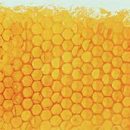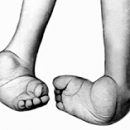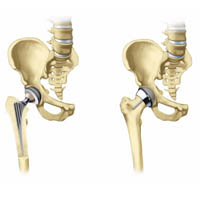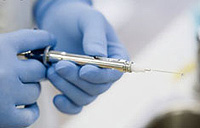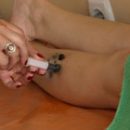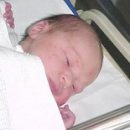Clippel-Faleh-Shpregel syndrome is a congenital anomaly for the development of a skeleton, in which the neck is shortened due to the violation of the development of the vertebrae. This anomaly can lead to spinal curvature, cause pain. Read more about the disease in the article.
Content
Clippel-Fayle-Shprengel syndrome - congenital spinal spinal vanity characterized by deformation (shortening) of neck, due to a decrease in the number of cervical vertebrae, their battle or smaller sizes. Two types of deformation are distinguished: the first type is to reduce the total number of cervical vertebrae; The second type is the battle of the entire spijan spiped in a single bone of the cervical spine with the occipital bone and breast vertebrae. Most often at the same disease, high standing blades are also marked.
Manifestations of Clippel-Faleh-Shprengel syndrome and its diagnosis
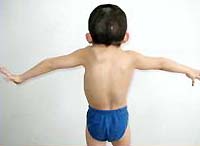 The neck of the patient is sharply shortened, as a result of which the head sits as it were on the shoulders, inclined to the side. The volume of movements in the cervical spine is limited. The chin is lowered to the chest, the asymmetry of the face is noted, rarely - squint.
The neck of the patient is sharply shortened, as a result of which the head sits as it were on the shoulders, inclined to the side. The volume of movements in the cervical spine is limited. The chin is lowered to the chest, the asymmetry of the face is noted, rarely - squint.
Part of the patients can be the wingid folds of the neck, the malformations of the muscles of the back. The blades are widely divorced, often shortened and raised up. It is clearly noticeable that the blade is standing above its normal position, it is shortened, expanded, often its inner edge stands for the stop, and the lower corner is approaching the spine, the upper part of the blade is bent. In most cases, deformation is painless, but sometimes accompanied by signs of radiculitis. Subsequently, with the growth of the spine, his curvature may develop.
Diagnosis of Klippel-Fale-Shprengel syndrome is based on a combination of symptoms: shortening neck, observed from birth, low hair growth border on neck and restriction of head mobility. To clarify the type of deformation, a x-ray study of the cervical and thoracic spine. In the pictures more often detect the battle of 4-6 vertebrae into a solid bone mass. Differential diagnosis is carried out with tuberculous spondylitis of the upper cervical vertebrae, bilateral and one-sided forms of muscle and other types of krivoshei (especially in the absence of the effect of conservative treatment).
Treatment of Clippel-Fale-Shpregel syndrome
Treatment, as a rule, conservative (therapeutic physical education, massage), is aimed at improving posture and prevention of further deformations. With pain, a person wears a special corset that supports the neck in the desired position. Also physiotherapy is also used. Operation is carried out only in the case when the nerves coming from the spinal cord.

